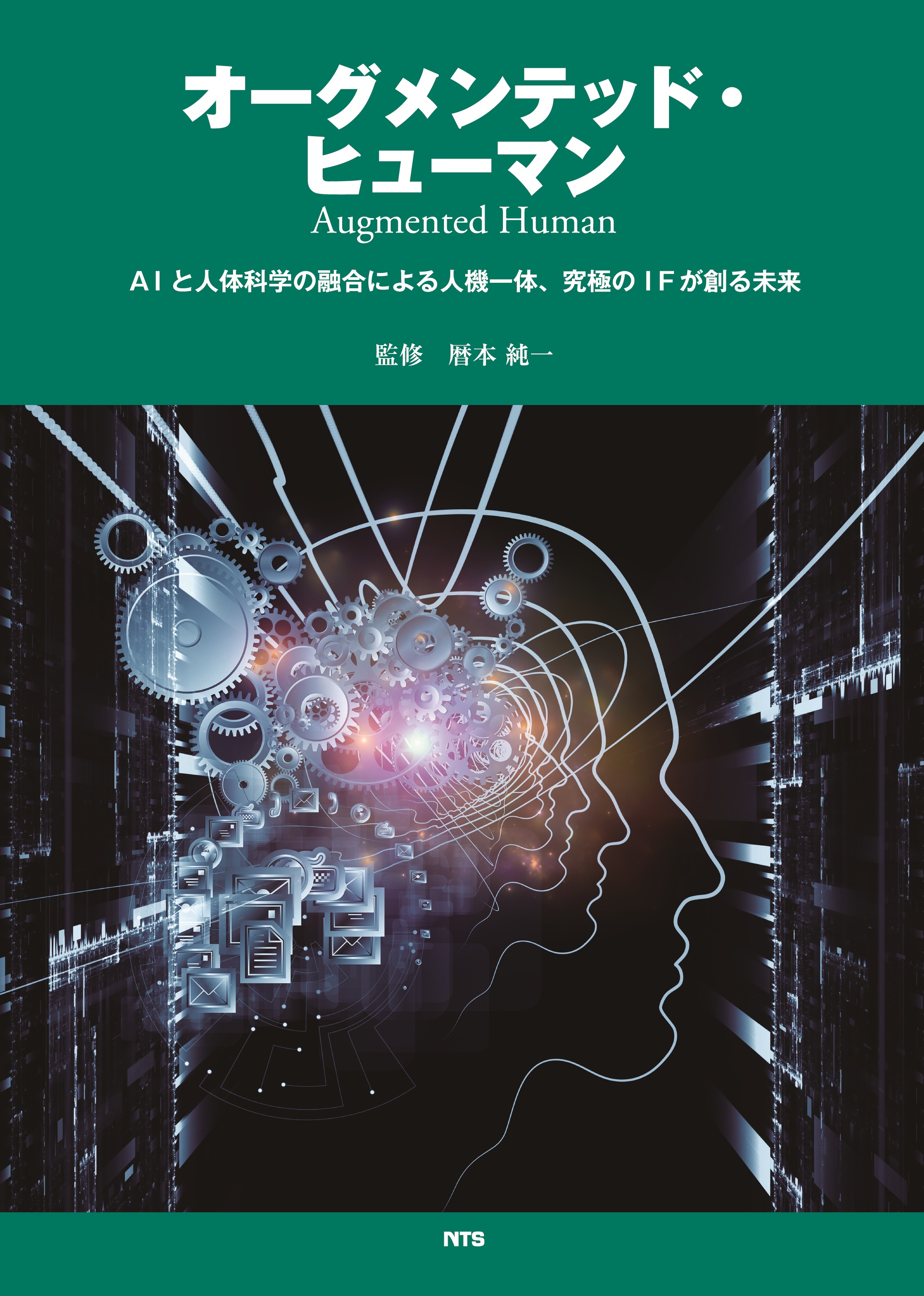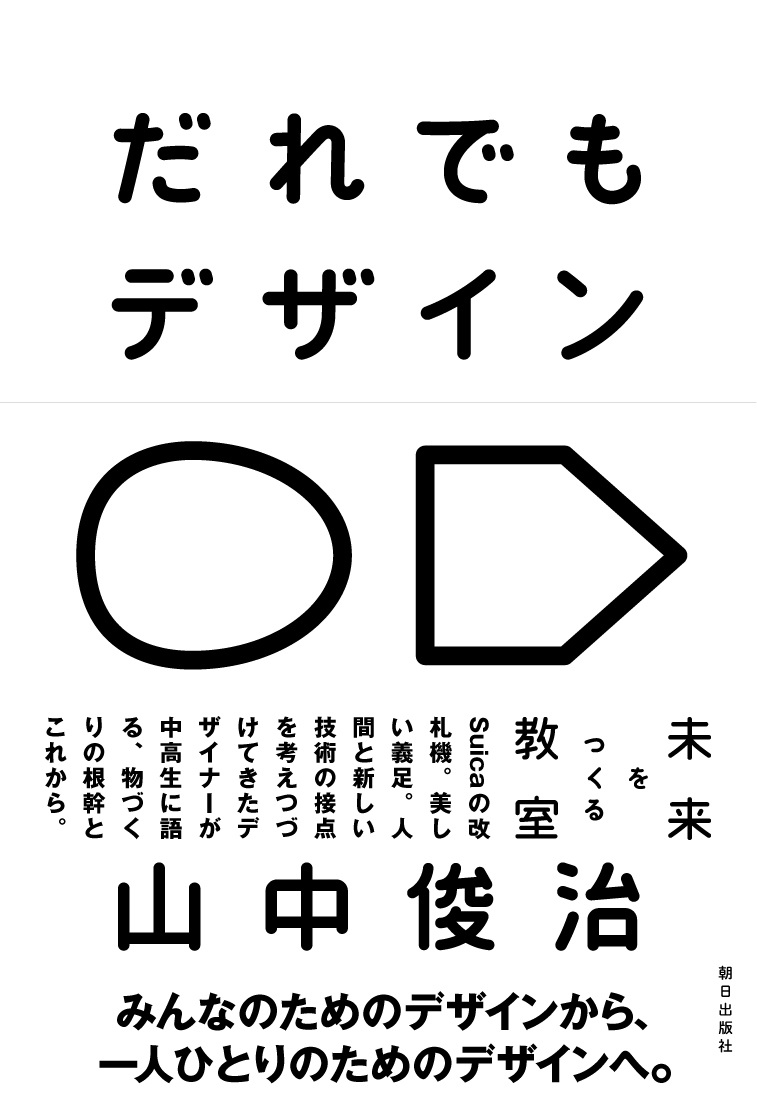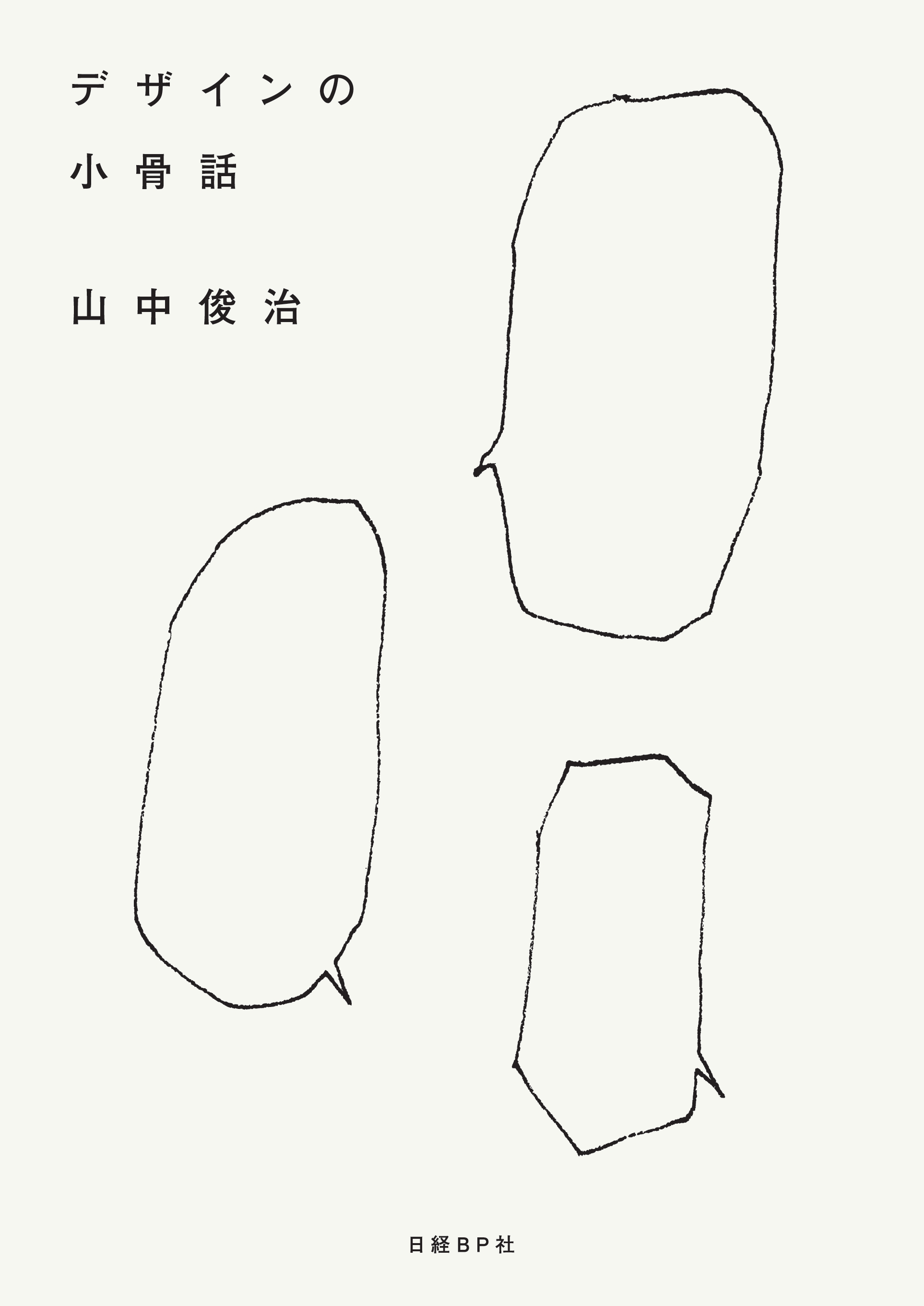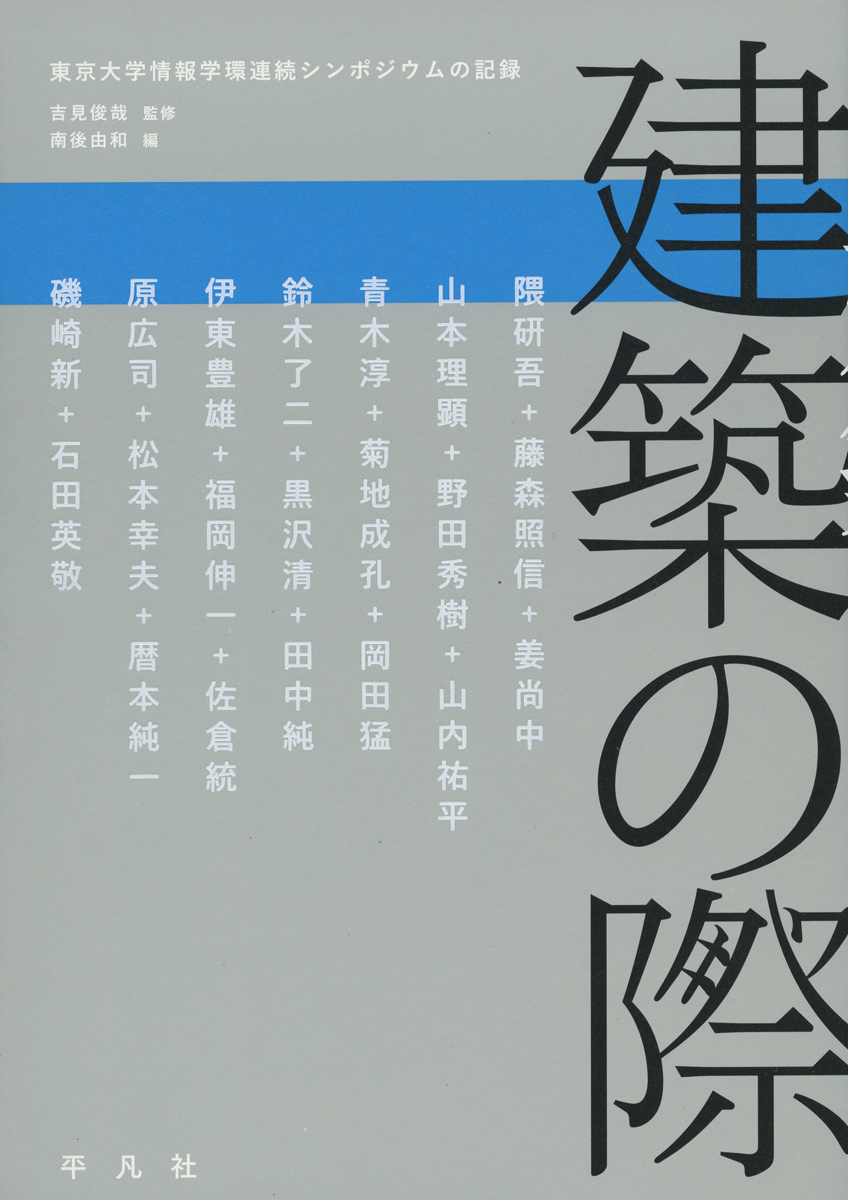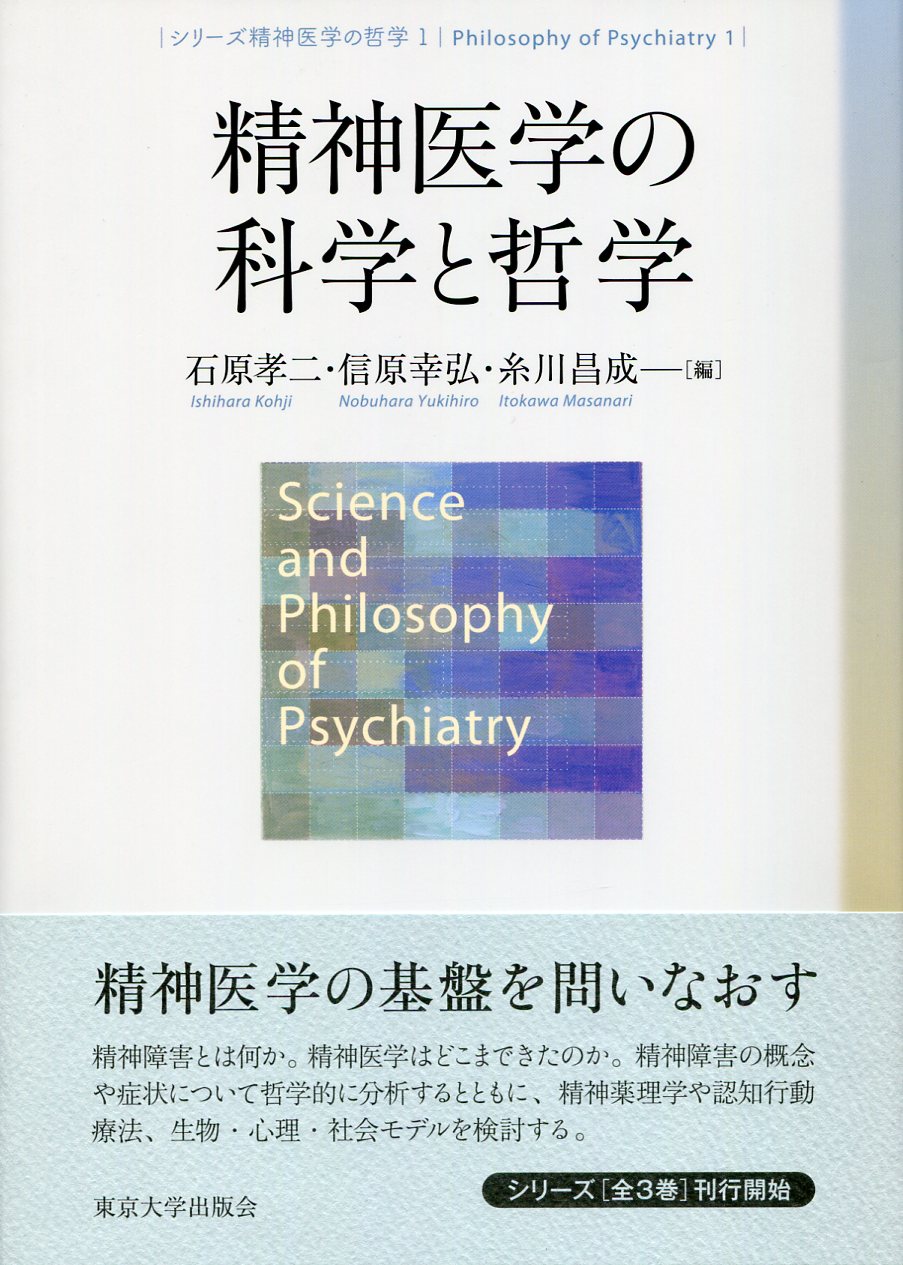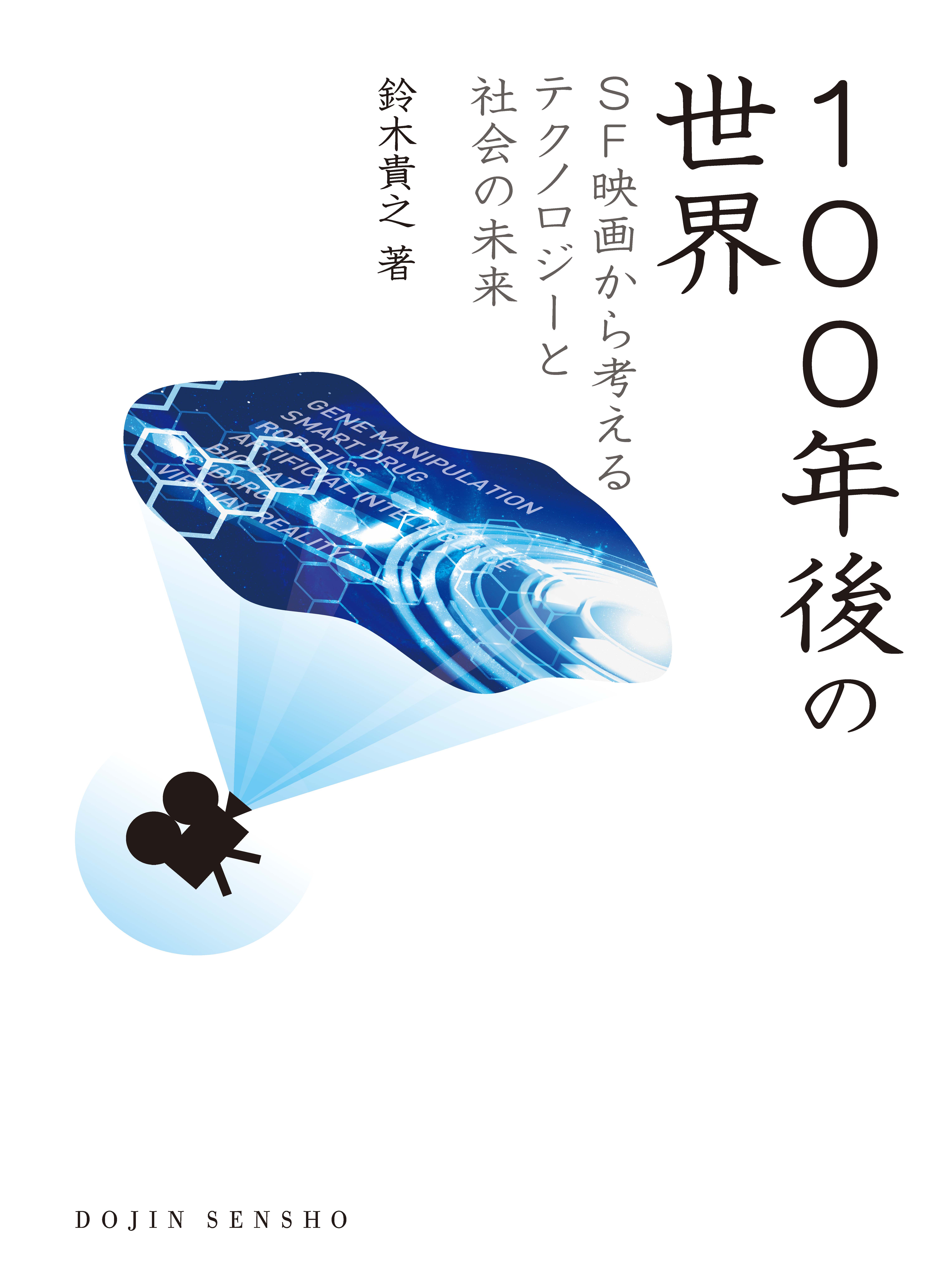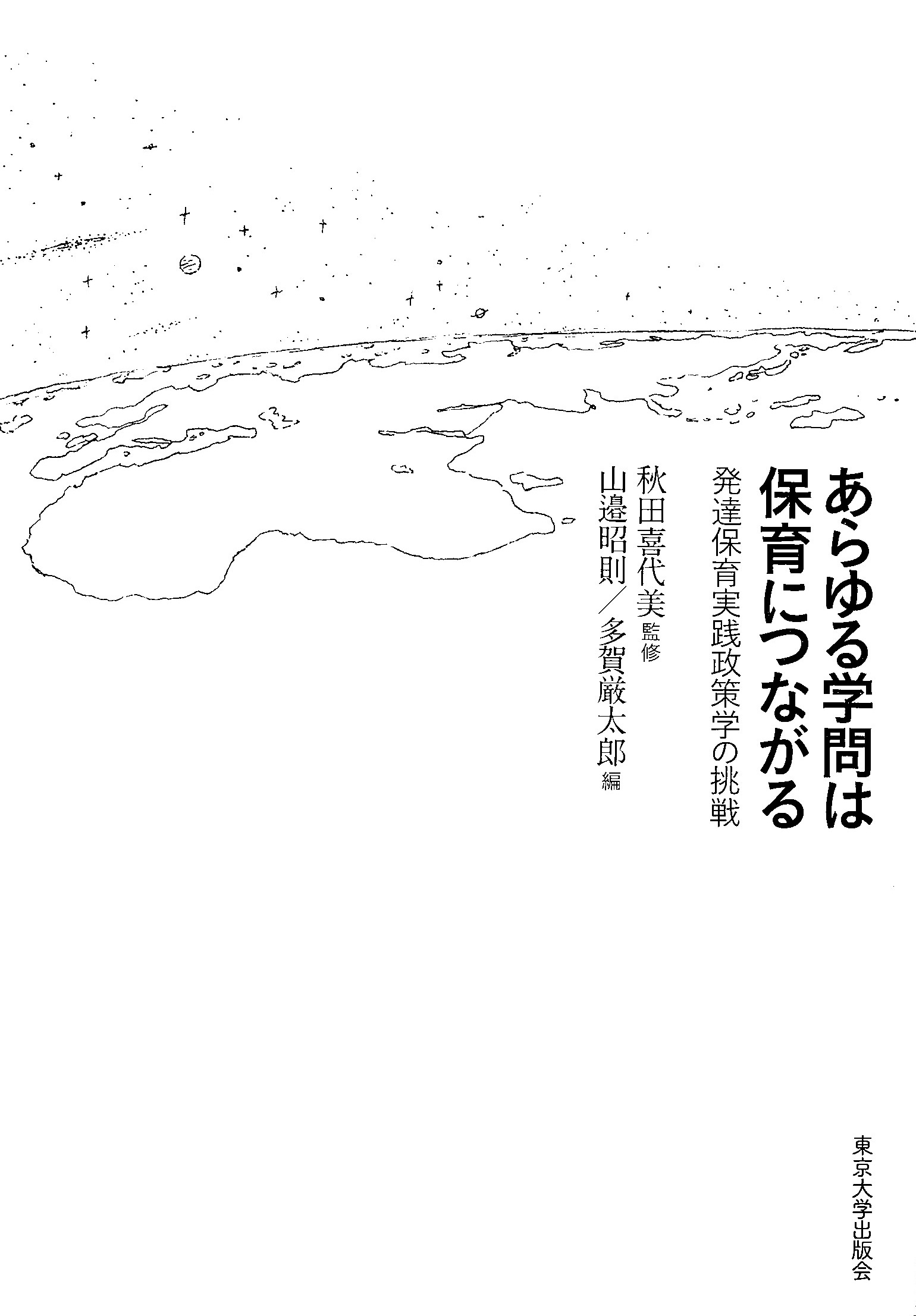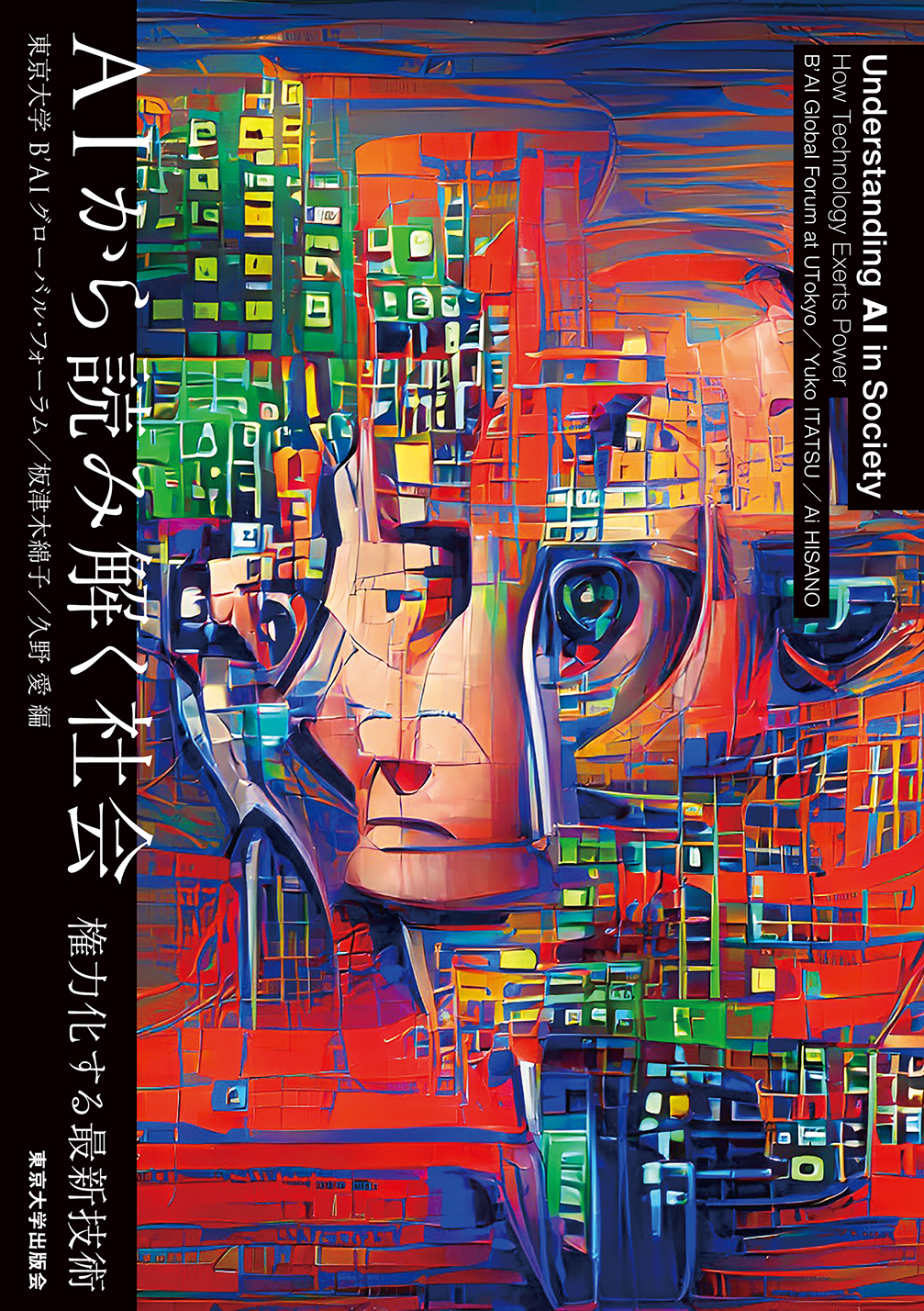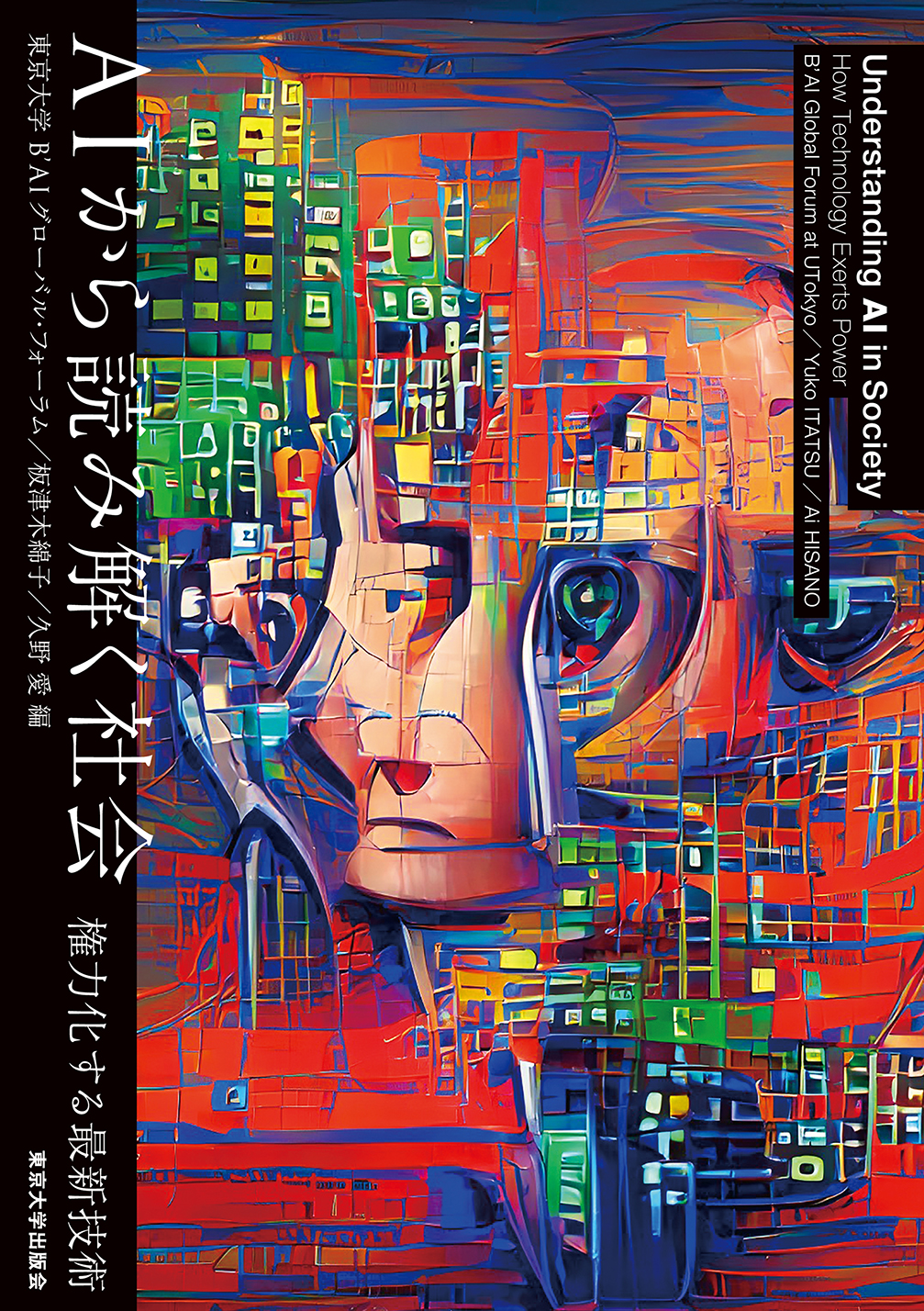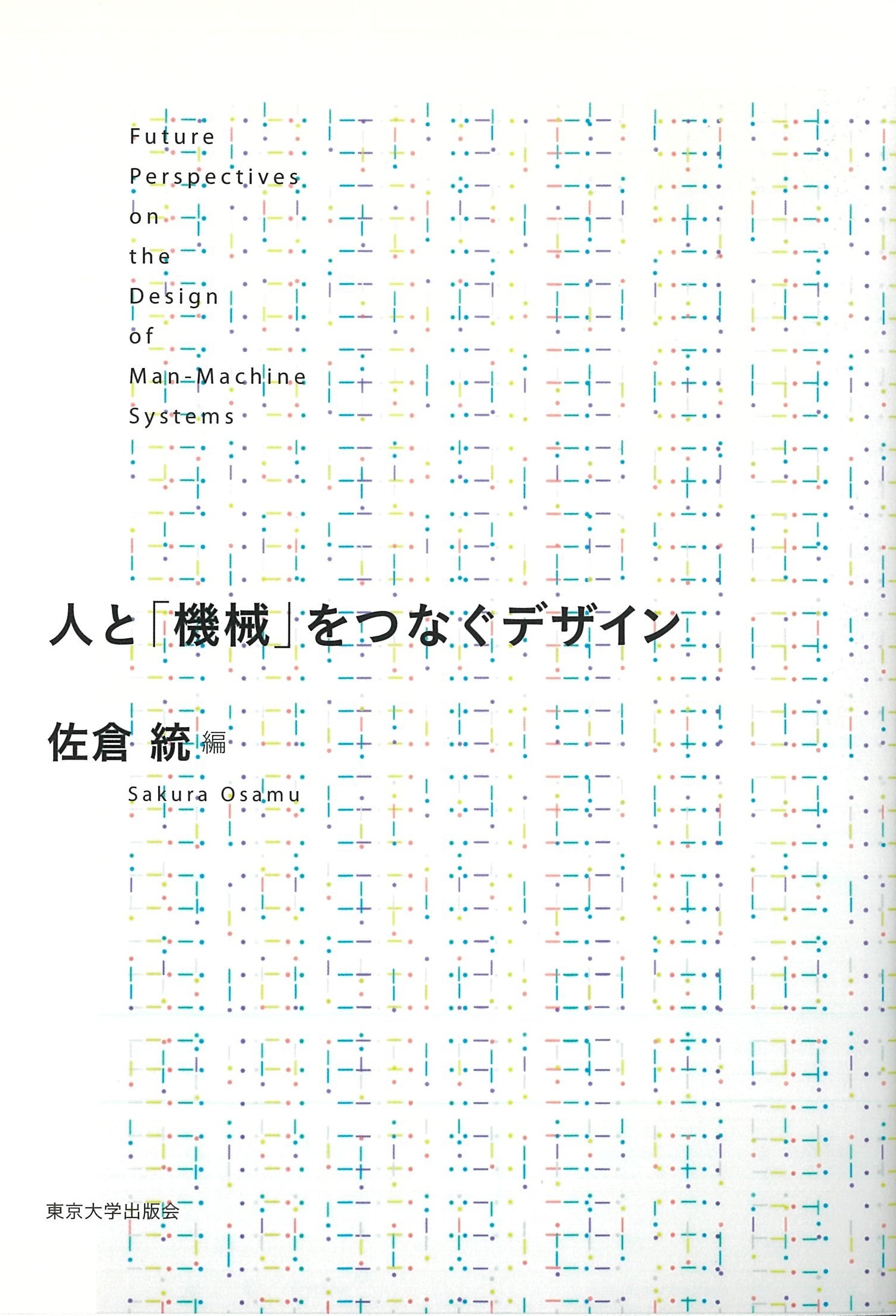
Title
Hito to Kikai wo Tsunagu Dezain (Design Thinking of Human-Machine System)
Size
312 pages, 127x188mm
Language
Japanese
Released
February 26, 2015
ISBN
978-4-13-063359-8
Published by
University of Tokyo Press
Book Info
See Book Availability at Library
Japanese Page
Today, machines have become pervasive throughout society. This edited book is a compilation of several discussions and ideas from people in various fields about how we can establish creative, healthy and good relations with the machines that increasingly dominate our environment.
This is not a textbook for systematic study of the field of human-machine relations. Instead it contains a wide and rather miscellaneous range of topics, from among which readers may explore and find that which touches their hearts or contributes to their own research. It may also be enjoyed in a more relaxed way just to entertain oneself with newer perspectives.
We human beings have always utilized tools and artificial things to adapt to the natural environment. The earliest artificial tools, such as levers and wheels, enhanced human motor ability as extensions of the limbs. Next followed tools which extended human sensory organs, such as telescopes and microscopes. Then what appeared are expansions of our brains, like books and libraries. All artificial things empower humans to develop their own "Umwelt," or environmental world, and ecological niche.
This relation of humans and machines has been changing recently with the emergence of autonomous AIs and robots, with which machines take on the personality of "another self," rather than mere extensions of humans. This may require us to fundamentally rethink human-machine relations, rather than simply relying on existing familiar attitudes to machines. That may cause confusion in society and unhappiness for individual citizens.
In this book, various people consider what we can and should do to avoid such confusion and unhappiness.
Contributors to the book include the following: a computer scientist who studies how to enhance human abilities through human-computer interfaces, prosthesis engineers who create and fine-tune prosthetic limbs and also organize a group of athletes with prosthetic limbs, community designers of Fablabo, a cultural anthropologist studying literacy, engineers who think about innovation everyday, media designers whose works are filled with pleasure, researchers who are trying to reorient the relationship between people and the surrounding environment from the perspectives of mechanical or urban engineering, an ecological psychologist thinking about the human environment through the body. These are only a few examples of the diverse contributors.
Precisely by being so miscellaneous and disorganized, we hope that this book will succeed in enriching the diversity, power and enjoyment of knowledge. I think that it might be necessary to diversify and expand this field in order to fully think about the major theme of human-machine relations. Indeed, we may need even more interdisciplinarity and intellectual mobilization in order to further advance the discussion.
Although the chapters may be read in any order, there is a certain logic to the way have they have been arranged. It would therefore be preferable to read them in the order presented. There may be new discoveries. And if you find something, please add a new chapter of your own. This research field needs new contributors such as yourself.
(Written by SAKURA Osamu, Professor, Interfaculty Initiative in Information Studies / 2017)
Related Info
http://www.hrnet.co.jp
Rekimoto Lab: Laboratoire Révolutionnaire et Romantique, (Human Augmentation Lab.), Interfaculty Initiative in Information Studies, The University of Tokyo
https://lab.rekimoto.org
Kazuhiko Hachiya Solo Exhibition - OpenSky 3.0 (07.13, 2013 – 09.16, 2013)
http://hachiya.3331.jp
Hiroto Kawabata
http://blog.goo.ne.jp/kwbthrt
TETSUDOU KOUSAIKAI prosthetics and orthotics support center
http://www.kousaikai.or.jp/support/
Prototyping & Design Laboratory
http://www.design-lab.iis.u-tokyo.ac.jp
Department of Life Support Technology (Molten), Graduate School of Medicine, the University of Tokyo
http://www.lifesupport.m.u-tokyo.ac.jp
Spatial Information Science Lab
http://www.spatial-lab.human.chuo-u.ac.jp/index.html
Department of Integrated Science and Engineering for Sustainable Society
http://www.human.chuo-u.ac.jp/teacher/3266
Yusuke Nakamura, Graduate School of Humanities and Sociology and Faculty of Letters, The University of Tokyo
http://www.l.u-tokyo.ac.jp/teacher/detail/149.html
Keio University SFC x-DESIGN
http://xd.sfc.keio.ac.jp
FabLab Kamakura
https://www.fablabkamakura.com
Kohji Ishihara, Department of History and Philosophy of Science, The University of Tokyo
http://hps.c.u-tokyo.ac.jp/staff/_data/ishihara_kohji/index.php
ENG: https://researchmap.jp/read0052179
Xenoma
https://xenoma.com
Masato Sasaki / Japanese Cognitive Science Society
http://www.jcss.gr.jp/fellowship/entry-246.html



 Find a book
Find a book


